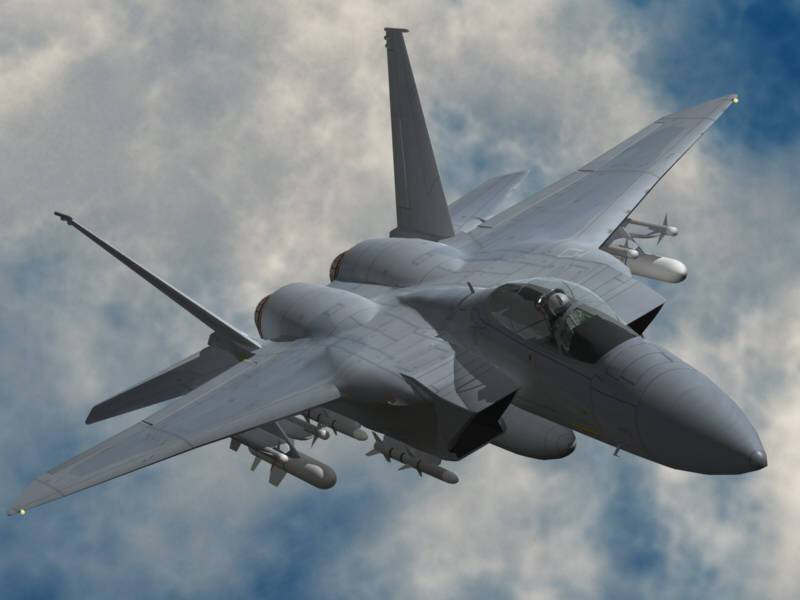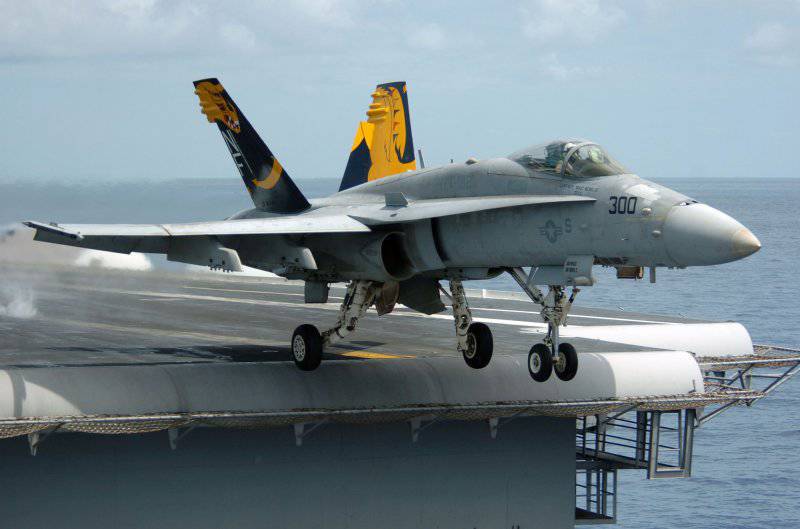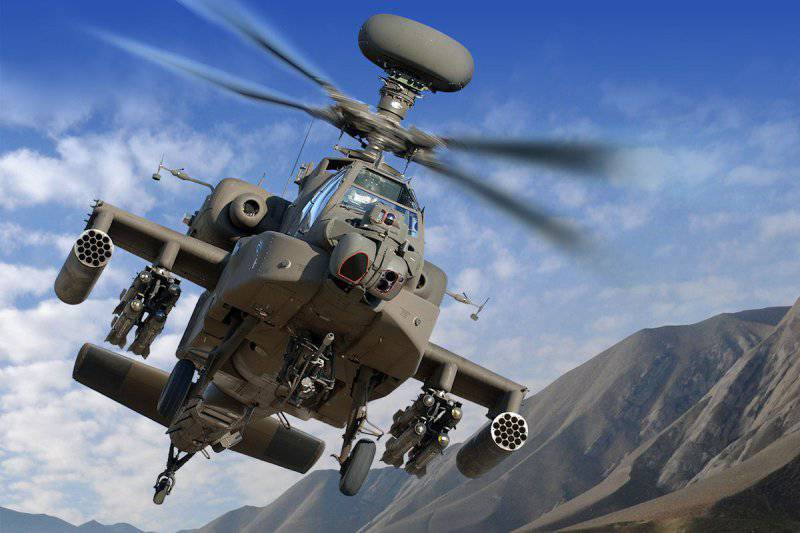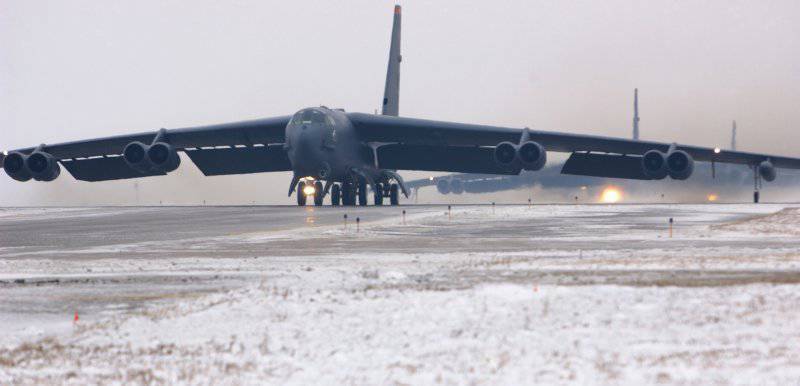The latest projects of military aviation equipment company Boeing
It should be recalled that for several decades, the "fiefdom" of the Boeing company were heavy combat vehicles. Almost all American heavy bombers were designed and built by Boeing. Over time, due to changes in the US strategy, the corporation suspended the development of new combat aircraft, limiting itself only to upgrading the existing technology. However, in recent years she has managed to return to this sector of the market. For such a return, Boeing had to buy one of its main competitors.
In the mid-nineties, McDonnell Douglas began to have serious economic problems. She did not have enough funds to continue the development of new aircraft, and in addition, the company dropped out of the competition to develop a promising fighter. The way out of this situation became negotiations with the corporation Boeing. As a result of the negotiations, McDonnell-Douglas became part of Boeing. Such a merger made it possible to retain a large number of qualified specialists, and also to continue the development of several projects.
Joining McDonnell Douglas allowed Boeing to return to the full development of combat aircraft. The latter “inherited” several projects that were of great interest both for specialists and potential customers. Since the merger, Boeing has conducted several upgrades to existing projects. Consider these developments.
The latest combat aircraft project developed by the independent company McDonnell Douglas was the F / A-18E / F Super Hornet. This multipurpose deck-based fighter was created in the first half of the nineties and for the first time took to the air 29 November 1995. The problems of the company-developer threatened to close the project, but the merger of the two organizations helped save it. Super Hornet was put into service in the 2000 year, and for this reason it is referred to as the Boeing F / A-18E / F.
The F / A-18E / F fighter is a deep modernization of the base F / A-18, but it is very different from it in a number of characteristics and even in size. Thus, the new aircraft has a larger wing span on 20, and the difference in maximum take-off mass reaches 6,8 t. Due to the more powerful General Electric F414-GE-400 engines, the upgraded aircraft has a greater combat radius on 40%.
The aircraft avionics underwent major changes. The F / A-18E / F fighter received an APG-79 radar with an active phased array, an AN / ASQ-228 ATFLIR optical-electronic container system, a new navigation and communications equipment, etc. Large colored liquid crystal displays are installed in the cockpit. For the convenience of controlling the aircraft, touch screens are used. A radiation warning system and an electronic warfare complex are provided.
From 2000, the F / A-18E and F / A-18F fighter jets are used by the US Navy. This technique is in service with more than three dozen squadrons. Built over 500 aircraft. In May 2007, the company Boeing received an order for the Australian Air Force to supply Super Hornet fighter jets. This contract implied the construction and supply of 24 aircraft. In 2013, the Australian military expressed a desire to acquire another two dozen Super Hornet fighters, explaining this to serious delays in the implementation of the project Lockheed Martin F-35 Lightning II.
In 2007, Boeing began shipping EA-18G Growler, a series of deck-mounted electronic warfare aircraft. These machines are a modified version of the F / A-18F fighter, equipped with a number of special equipment. The main means of accomplishing the combat task of the Growler planes are EW ALQ-99 containers, suspended under the wing. To date, about EA-120G 18 aircraft have been built. All of these machines are operated by the US Navy. In the foreseeable future, the Air Force of Australia should receive this type of equipment.
In 2009, the presentation of the prototype of the promising fighter Boeing F-15SE Silent Eagle took place. The F-15 project previously belonged to McDonnell Douglas and was transferred to Boeing after their merger. The Silent Eagle modernization project was developed after the merger of the companies and is indicated in the documents accordingly. The goal of the F-15SE project is to enhance the performance of the basic F-15 fighter through the use of new avionics and some design changes. The solutions used make it possible to consider the upgraded aircraft as a representative of the 4 + or 4 ++ generation.

Reduction of the effective area of dispersion is proposed to achieve in several ways. Thus, a number of aircraft surfaces should receive a radar absorbing coating, and the number of protruding elements is reduced with the help of new units and assemblies. On the fuselage of the F-15SE aircraft, conformal structures are mounted that hold additional fuel tanks and cargo compartments for the transportation of weapons. Inside the conformal cargo compartments there are four weapon suspension points. If necessary weapon can be hung under the wing, but this affects the visibility of the aircraft.
The Silent Eagle fighter must be equipped with radar with an active phased antenna array APG-82, a modern electronic warfare system from BAE Systems, an optical-electronic target detection system and a number of other equipment.
It is expected that the applied innovations will significantly improve the combat capabilities of the fighter in comparison with its previous modifications. However, when using conformal airborne units, the combat radius of the aircraft is reduced from 1850 to 1480 km. Such a decrease in the characteristics was considered a moderate price to increase other indicators and the possibility of an enemy air defense breaking through.
The first flight of the prototype Boeing F-15SE Silent Eagle took place on July 8 2010. Tests and improvements promising fighter continues to this day. According to the estimates of the specialists of the development company, about F-190SE 15 aircraft can be built and sold. The Air Forces of the USA, Israel, Saudi Arabia and other countries show their interest in these fighters. Due to the ongoing development of the supply contracts have not yet been concluded.
At the end of the last decade, Boeing began developing another modification of the AH-64 Apache helicopter. Initially, the project wore the designation AH-64D Block III. In the year of 2012, in view of the large number of innovations, the car began to be considered not an upgrade of the AH-64D machine, but a completely new modification called AH-64E Apache Guardian.
The updated helicopter received more powerful engines General Electric T700-701D with a digital control system, new design blades and a set of new electronic equipment. The Apache Guardian is equipped with an upgraded version of the AN / APG-78 Longbow radar with a bobbin antenna. One of the peculiarities of this station is the ability to detect surface targets, which makes it possible to use the helicopter more effectively in the interests of the Navy.
The first Boeing AH-64E Apache Guardian helicopters were handed over to the customer in the autumn of 2011. In the foreseeable future, it is planned to build a new model 56 helicopters. In addition, repairs and upgrades will be 634 machines model AH-64D, which will receive equipment and components provided for the project Guardian.
In 2014, the Boeing Company presented the first materials on the project for the further development of the AH-64 helicopter. The AH-64F project is still at the concept development stage. This technique is planned to build approximately in the thirties. The new helicopter should carry advanced radio-electronic equipment, have an engine of at least 3000 hp. and be equipped with a rotating tail rotor, which will be used to compensate for the reactive torque or for additional acceleration of the machine when flying at high speeds.
As we can see, until the mid-nineties, Boeing Corporation almost did not develop new combat aircraft or helicopters, limited only to servicing and upgrading existing technology, for example, B-52 Stratofortress bombers. The main efforts of the corporation were focused on the civil aircraft market. Joining McDonnell Douglas, a former competitor in passenger aviation, not only simplified Boeing’s position in this market sector, but also made it possible to return to the creation of combat aircraft.
Shortly after the purchase of McDonnell Douglas, Boeing completed the tests and fine-tuning of the Super Hornet aircraft, and then launched its mass production. Since the end of the nineties, new modernization projects have been developed for various airplanes and helicopters. Now Boeing, along with Lockheed Martin, is participating in the Next-Generation Bomber competition, which aims to create a promising long-range bomber. After several failures of the last decades, Boeing intends not only to return to the mass development of new combat aircraft, but also to obtain a number of lucrative contracts for its design, construction and supply.
On the materials of the sites:
http://boeing.com/
http://airwar.ru/
http://globalsecurity.org/
http://defense-update.com/
http://svpressa.ru/
http://bbc.co.uk/



Information